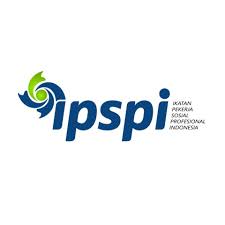THE EFFECT OF ADOLESCENT ATTITUDES ON KARANG TARUNA IN HANDLING PROBLEMS TOWARD ADOLESCENTS IN THE DEVELOPMENT PERIOD
DOI:
https://doi.org/10.31595/ijsw.v3i2.230Abstract
Adolescence is the most important development period for an individual, in fact, it is a period filled by changes and vulnerable to the emergence of the problems. Forum of Karang Taruna has a strategic role as a means of youth participation in an effort to make social adjustments so that they can deal with the problems encountered during life development. This research was conducted to gain a deep understanding and thorough about the influence of adolescent attitudes about the Karang Taruna on handling problems faced by youth in the development phase of their life. This research used a quantitative approach with a survey explanatory research population were teenagers aged 12 to 21 years. Measuring instrument research used a Likert scale. The technique of collecting data used questionnaires and documentation study. Data were analyzed using path analysis. Adolescent attitudes toward Karang Taruna have a significant effect on the involvement of adolescents in Karang Taruna activities. The amount of influence adolescent attitudes about the Karang Taruna on the involvement of adolescents in Karang Taruna amounted to 61.40%. The results also showed that the attitude of teenagers towards Karang Taruna has a significant influence on the Settlement of the problems faced by an adolescent in their life development through variable among adolescent involvement in Karang Taruna. The number of adolescent attitudes influences Karang Taruna through the involvement of adolescents in Karang Taruna on the handling of problems faced by an adolescent in the developmental period of their life amounted to 85.80%. Karang Taruna can be used as a means to develop the activity and creativity of adolescents in handling the problems encountered in the development phase of their life. However, there are six main problems faced by Karang Taruna including; (1) an inactive member; (2); a caretaker capacity in managing Karang Taruna; (3) there is no clear work programme; (4) The board of Karang Taruna inactivity; (5) the absence of funding sources; and (6) less variation in the activities of Karang Taruna that does not appeal to its members, especially for passive members.
Downloads
References
A. Siporin Max. (1975). Introduction to Social Work Practice. Macmillan Publishers, New York.
Asngari (1984). Psikologi Sosial. Bandung Remaja Rosdakarya
Atkinson & Hilgard's (1991). Introduction to Psychology (14 th ed)., London: Harcourt College Publishers,
Fagan, R. (2006). Counseling and Treating Adolescents with Alcohol and Other Substance Use Problems and their Family. The Family Journal: Counseling therapy For Couples and Families. Vol.14. No.4.326-333. Sage Publication diakses melalui http://tfj.sagepub.com/cgi/reprint/14/4/326 pada 18 April 2008
Gibson, James (1986). Organisasi Prilaku, Struktur dan Proses. Diterjemah oleh Djoerban Wahid. Erlangga. Jakarta
Gunarsa, S. D. (1989). Psikologi perkembangan: Anak dan Remaja. Jakarta: BPK. Gunung Mulia.
Hurlock, E.B. (1991). Psikolgi Perkembangan Suatu Pendekatan Sepanjang Rentang Kehidupan (Terjemahan oleh Istiwidayanti dan Soedjarwo). Jakarta : Penerbit Erlangga.
Iskandar, Jusman (1999). Metode Penelitian. Universitas Garut. Garut
Iskandarsyah. Aulia (2006). Remaja dan Permasalahannya: Perspektif psikologi terhadap permasalahan remaja dalam bidang pendidikan. Bandung : Universitas Padjadjaran
Jundarwanto (2009). Masalah Generasi Muda. http://korananakindonesia. wordpress.com
Keputusan Menteri Sosial RI Nomor: 83/PEGHUK/2005 Tentang Pedoman Karang Taruna. Jakarta: Kementrian Sosial RI.
Moh. Nazir (1998). Metode Penelitian. Jakarta. Ghalia Indonesia.
Mongks, F. J. , Knoers, A. M. P. , & Haditono, S. R. (2000). Psikologi Perkembangan: Pengantar dalam berbagai bagiannya. Yogyakarta: Gadjah Mada University Press.
Pincus Allan, Anne Minahan (1973). Social Work Practice; Model and Method. F.E. Peacock Publishers, Inc.,Hasco. Illeanis.
Purbayu Budi Santosa dan Ashari (2005) Analisis Statistik dengan Microsoft Excel & SPSS. Penerbit Andi. Yogyakarta.
Putranti. Nurita (2009). Remaja dan Permasalahannya. http://www.psb-psma.org/content/blog/remaja-dan-permasalahannya-part-1
Rakhmat. Jalaluddin (1998). Psikologi Komunikasi. Bandung: Remaja Rosdakarya
Rajasa, Hata (2007). Membangun Karakter dan Kepribadian Bangsa.http://www.setneg.go.id/index.php?option=com_content&task=view&id=529&Itemid=116
Rey Lachièze and M Mbelek J.-P. (2002), International Journal of Modern Physics A, vol.17, 29, p.4317-4323 (november 2002).
Ruch, F.L., & Ruch, W.M. (1967). The K factor as a (validity) suppressor variable in predicting success in selling. Journal of Applied Psychology, 51, 201-204.
Santrok, J. W. (2003). Adolescence (Perkembangan Remaja). Terjemahan. Jakarta: Penerbit Erlangga.
Setiono, L.H. (2002). Beberapa Permasalahan Remaja. Diakses dari www.e-psikologi.com pada tanggal 22 April 2006.
Singarimbun, Masri dan Sofyan Effendi (1989) Metode Penelitian Survei. LP3ES. Jakarta
Soehartono,Irawan (1995). Metode Penelitian Sosial Bandung. PT Remaja Rosda Karya
Soetarso (1992). Praktek Pekerjaan Sosial. Bandung. Kopma STKS
-------------. 1993. Kesejahteraan Sosial, Pelayanan Sosial, dan Kebijakan Sosial. Bandung: STKS
Sugiyono (1998) Statistika untuk Penelitian. Alfabeta. Bandung
Tjahjorini, Sri (2001). Persepsi Anak Jalanan terhadap Bimbingan Sosial melalui Rumah. Singgah di Kotamadya Bandung. Institur Pertanian Bogor
Walgito, Bimo (1981). Pengantar Psikologi Sosial. Indonesia: Andi Ofset
Yusuf. A. (1991). Psikologi Sosial. Bandung:Remaja Rosdakarya
Downloads
Published
Issue
Section
Citation Check
License
Copyright (c) 2020 Suharma Suharma, Ramli A Rahman, Ernalia Lia Syaodih, Yana Sundayani, Popon Sutarsih, Yeane EM Tungga

This work is licensed under a Creative Commons Attribution-NonCommercial-ShareAlike 4.0 International License.
With the receipt of the article by the IJSW Editorial Board and the decision to be published, then the copyright regarding the article will be diverted to IJSW (Indonesian Journal of Social Work). Poltekesos Press - Bandung Polytechnic of Social Welfare (Poltekesos Bandung) hold the copyright regarding all the published articles in this journal.
Poltekesos Press - Bandung Polytechnic of Social Welfare (Poltekesos Bandung) has the right to multiply and distribute the article and every author is not allowed to publish the same article that was published in this journal.�Thanks to Poltekesos Bandung �that was funded this journal sustainability.
�
Fill out the form and submit via email or fax to the following address:
Bandung Polytechnic of Social Welfare (Poltekesos Bandung)
Jl. Ir. H. Juanda No. 367 Bandung � Jawa Barat � INDONESIA 40135
Phone : +62 22 2504838
Fax : +62 22 2502962
Email : ijsw@poltekesos.ac.id












